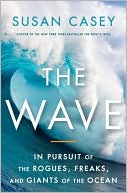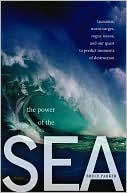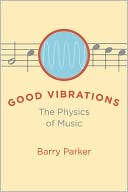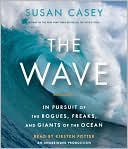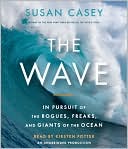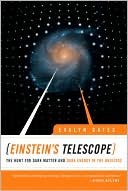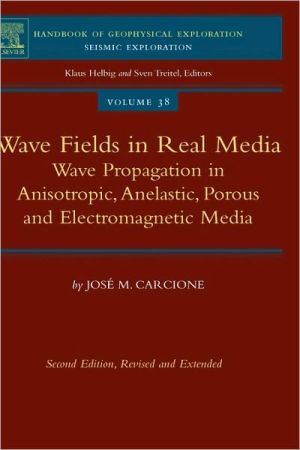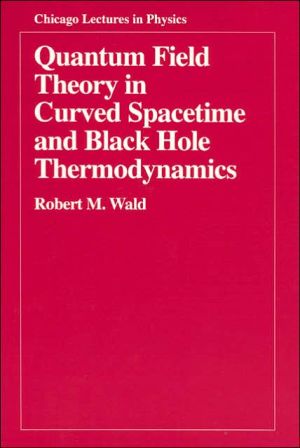Waves and Oscillations: A Prelude to Quantum Mechanics
Waves and Oscillations: A Prelude to Quantum Mechanics places a unique emphasis on the deep connections between classical waves and oscillations and quantum mechanics. Most scientists and engineers understand these connections, but too often they are not stressed to students. This lively book uses these relationships to give additional motivation, without attempting to teach the quantum mechanics. It offers students an engaging and thorough understanding of how modern aspects of physics are...
Search in google:
Waves and oscillations permeate virtually every field of current physics research, are central to chemistry, and are essential to much of engineering. Furthermore, the concepts and mathematical techniques used for serious study of waves and oscillations form the foundation for quantum mechanics. Once they have mastered these ideas in a classical context, students will be ready to focus on the challenging concepts of quantum mechanics when they encounter them, rather than struggling with techniques. This lively textbook gives a thorough grounding in complex exponentials and the key aspects of differential equations and matrix math; no prior experience is assumed. The parallels between normal mode analysis, orthogonal function analysis (especially Fourier analysis), and superpositions of quantum states are clearly drawn, without actually getting into the quantum mechanics. An in-depth, accessible introduction to Hilbert space and bra-ket notation begins in Chapter 5 (on symmetrical coupled oscillators), emphasizing the analogy with conventional dot products, and continues in subsequent chapters. Connections to current physics research (atomic force microscopy, chaos, supersolids, micro electro-mechanical systems (MEMS), magnetic resonance imaging, carbon nanotubes, and more) are highlighted in the text and in end-of-chapter problems, and are frequently updated in the associated website. The book actively engages readers with a refreshing writing style and a set of carefully applied learning tools, such as in-text concept tests, "your turn" boxes (in which the student fills in one or two steps of a derivation), concept and skill inventories for each chapter, and "wrong way" problems in which the student explains the flaw in a line of reasoning. These tools promote self-awareness of the learning process.The associated website features custom-developed applets, video and audio recordings, additional problems, and links to related current research. The instructor-only part includes difficulty ratings for problems, optional hints, full solutions, and additional support materials.
Learning Tools Used in This Book ix1 Simple Harmonic Motion 11.1 Sinusoidal oscillations are everywhere 11.2 The physics and mathematics behind simple sinusoidal motion 31.3 Important parameters and adjustable constants of simple harmonic motion 51.4 Mass on a spring 81.5 Electrical oscillators 101.6 Review of Taylor series approximations 121.7 Euler's equation 131.8 Review of complex numbers 141.9 Complex exponential notation for oscillatory motion 161.10 The complex representation for AC circuits 181.11 Another important complex function: The quantum mechanical wavefunction 241.12 Pure sinusoidal oscillations and uncertainty principles 26Concept and skill inventory 29Problems 312 Examples of Simple Harmonic Motion 392.1 Requirements for harmonic oscillation 392.2 Pendulums 402.3 Elastic deformations and Young's modulus 422.4 Shear 472.5 Torsion and torsional oscillators 492.6 Bending and Cantilevers 52Concept and skill inventory 56Problems 583 Damped Oscillations 643.1 Damped mechanical oscillators 643.2 Damped electrical oscillators 683.3 Exponential decay of energy 693.4 The quality factor 703.5 Underdamped, overdamped, and critically damped behavior 723.6 Types of damping 74Concept and skill inventory 76Problems 774 Driven Oscillations and Resonance 844.1 Resonance 844.2 Effects of damping 914.3 Energy flow 954.4 Linear differential equations the superposition principle for driven systems, and the response to multiple drive forces 994.5 Transients 1014.6 Electrical resonance 1044.7 Other examples of resonance: MRT and other spectroscopies 1074.8 Nonlinear oscillators and chaos 114Concept and skill inventory 128Problems 1295 Symmetric Coupled Oscillators and Hilbert Space 1375.1 Beats: An aside? 1375.2 Two symmetric coupled oscillators: Equations of motion 1395.3 Normal modes 1425.4 Superposing normal modes 1465.5 Normal mode analysis, and normal modes as an alternate description of reality 1495.6 Hilbert space and bra-ket notation 1535.7 The analogy between coupled oscillators and molecular energy levels 1635.8 Nonzero initial velocities 1655.9 Damped, driven coupled oscillators 166Concept and skill inventory 168Problems 1706 Asymmetric Coupled Oscillators and the Eigenvalue Equation 1796.1 Matrix math 1796.2 Equations of motion and the eigenvalue equation 1826.3 Procedure for solving the eigenvalue equation 1866.4 Systems with more than two objects 1916.5 Normal mode analysis for multi-object, asymmetrical systems 1946.6 More matrix math 1986.7 Orthogonality of normal modes, normal mode coordinates, degeneracy, and scaling of Hilbert space for unequal masses 201Concept and skill inventory 208Problems 2107 String Theory 2167.1 The beaded string 2167.2 Standing wave guess: Boundary conditions quantize the allowed frequencies 2197.3 The highest possible frequency; connection to waves in a crystalline solid 2227.4 Normal mode analysis for the beaded string 2267.5 Longitudinal oscillations 2277.6 The continuous string 2307.7 Normal mode analysis for continuous systems 2317.8 k-space 234Concept and skill inventor 236Problems 2368 Fourier Analysis 2468.1 Introduction 2468.2 The Fourier Expansion 2478.3 Expansions using nonnormalized orthogonal basis functions 2508.4 Finding the coefficients in the Fourier series expansion 2518.5 Fourier Transforms and the meaning of negative frequency 2548.6 The Discrete Fourier Transform (DFT) 2588.7 Some applications of Fourier Analysis 265Concept and skill inventory 267Problems 2689 Traveling Waves 2809.1 Introduction 2809.2 The wave equation 2809.3 Traveling sinusoidal waves 2849.4 The superposition principle for traveling waves 2859.5 Electromagnetic waves in vacuum 2879.6 Electromagnetic waves in matter 2969.7 Waves on transmission lines 3019.8 Sound waves 3059.9 Musical instruments based on tubes 3149.10 Power carried by rope and electromagnetic waves; RMS amplitudes 3169.11 Intensity of sound waves; decibels 3209.12 Dispersion relations and group velocity 323Concept and skill inventory 332Problems 33410 Waves at Interfaces 34310.1 Reflections and the idea of boundary conditions 34310.2 Transmitted waves 34910.3 Characteristic impedances for mechanical systems 35210.4 "Universal" expressions for transmission and reflection 35610.5 Reflected and transmitted waves for transmission lines 35910.6 Reflection and transmission for electromagnetic waves in matter: Normal incidence 36410.7 Reflection and transmission for sound waves, and summary of isomorphisms 36710.8 Snell's Law 36810.9 Total internal reflection and evanescent waves 371Concept and skill inventory 378Problems 379Appendix A Group Velocity for an Arbitrary Envelope Function 388Index 393

